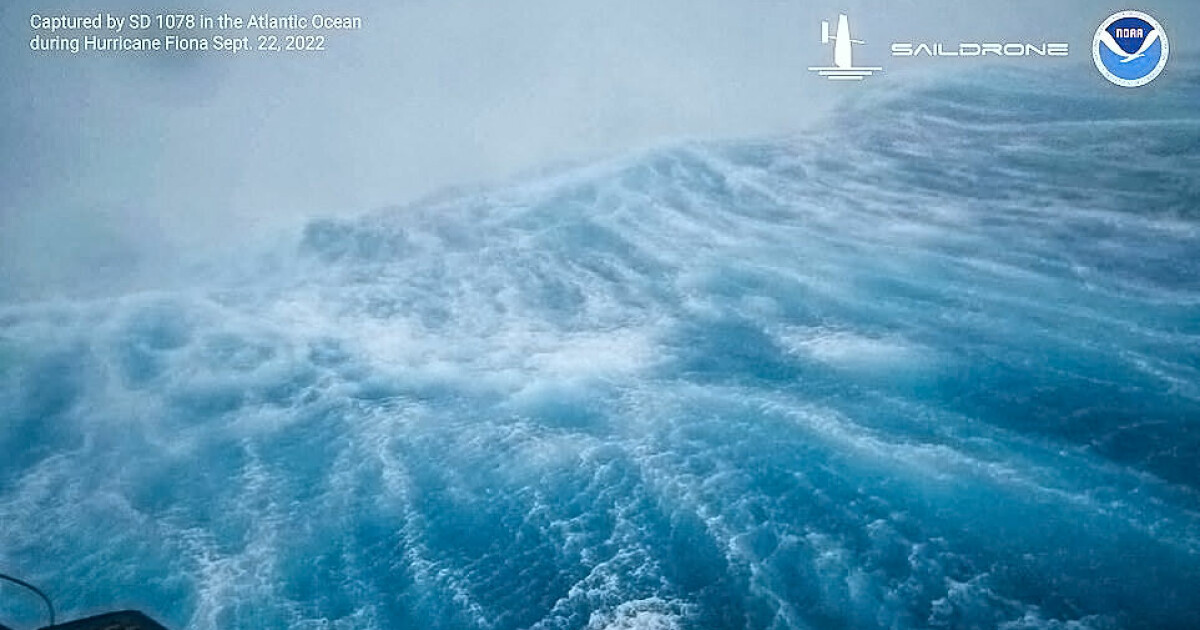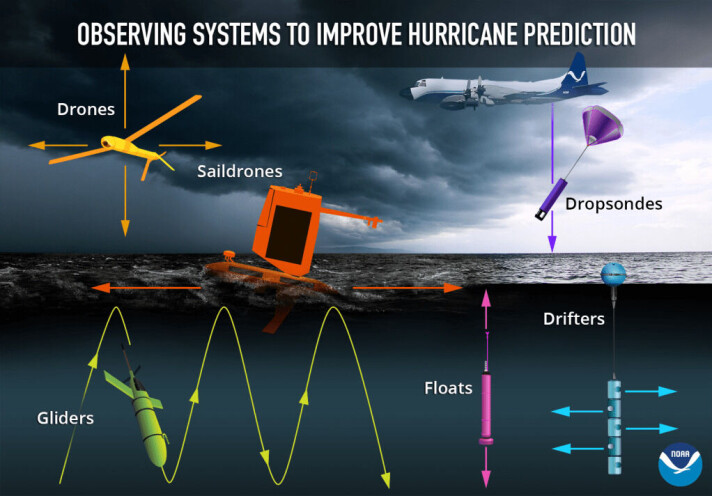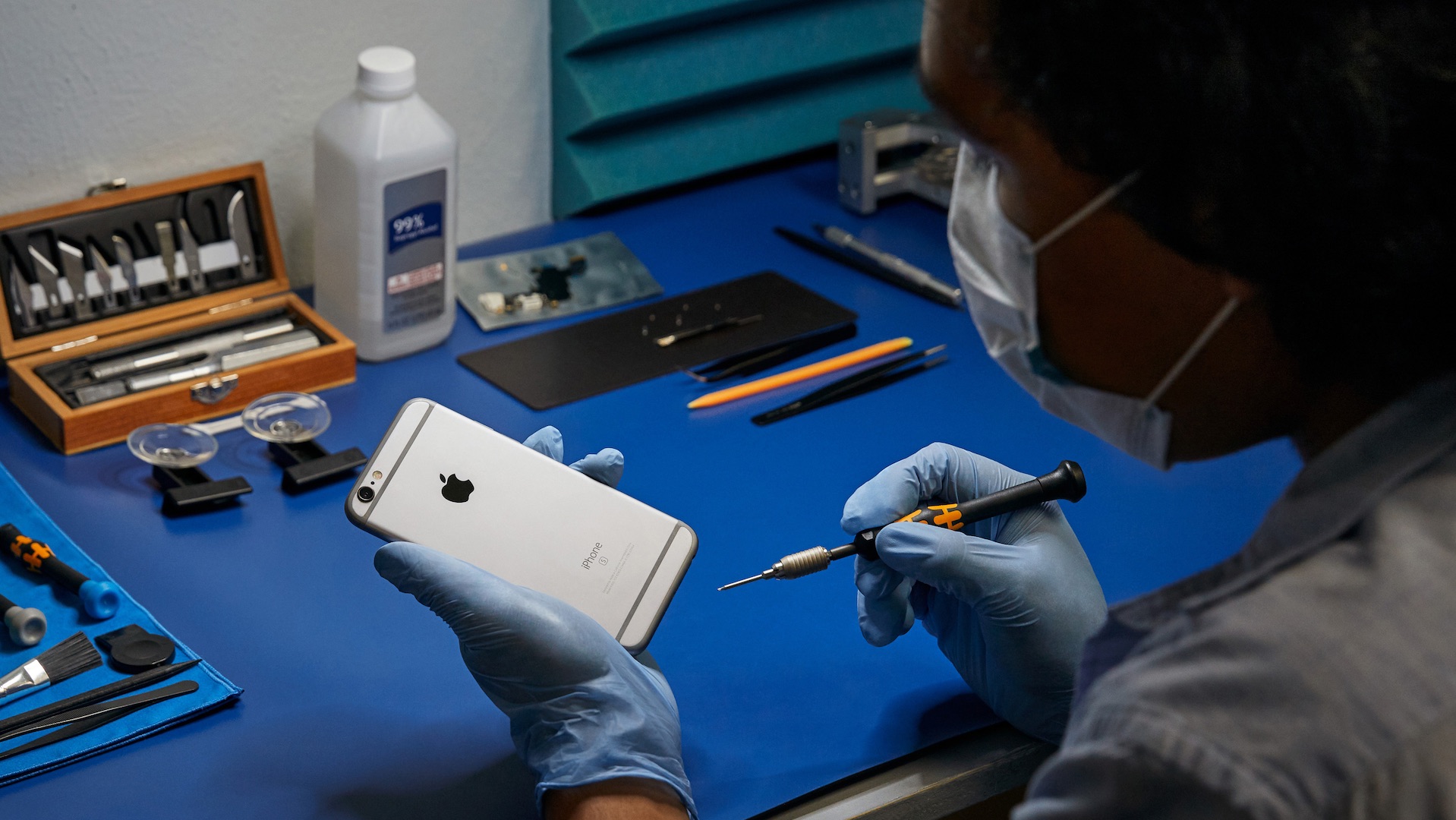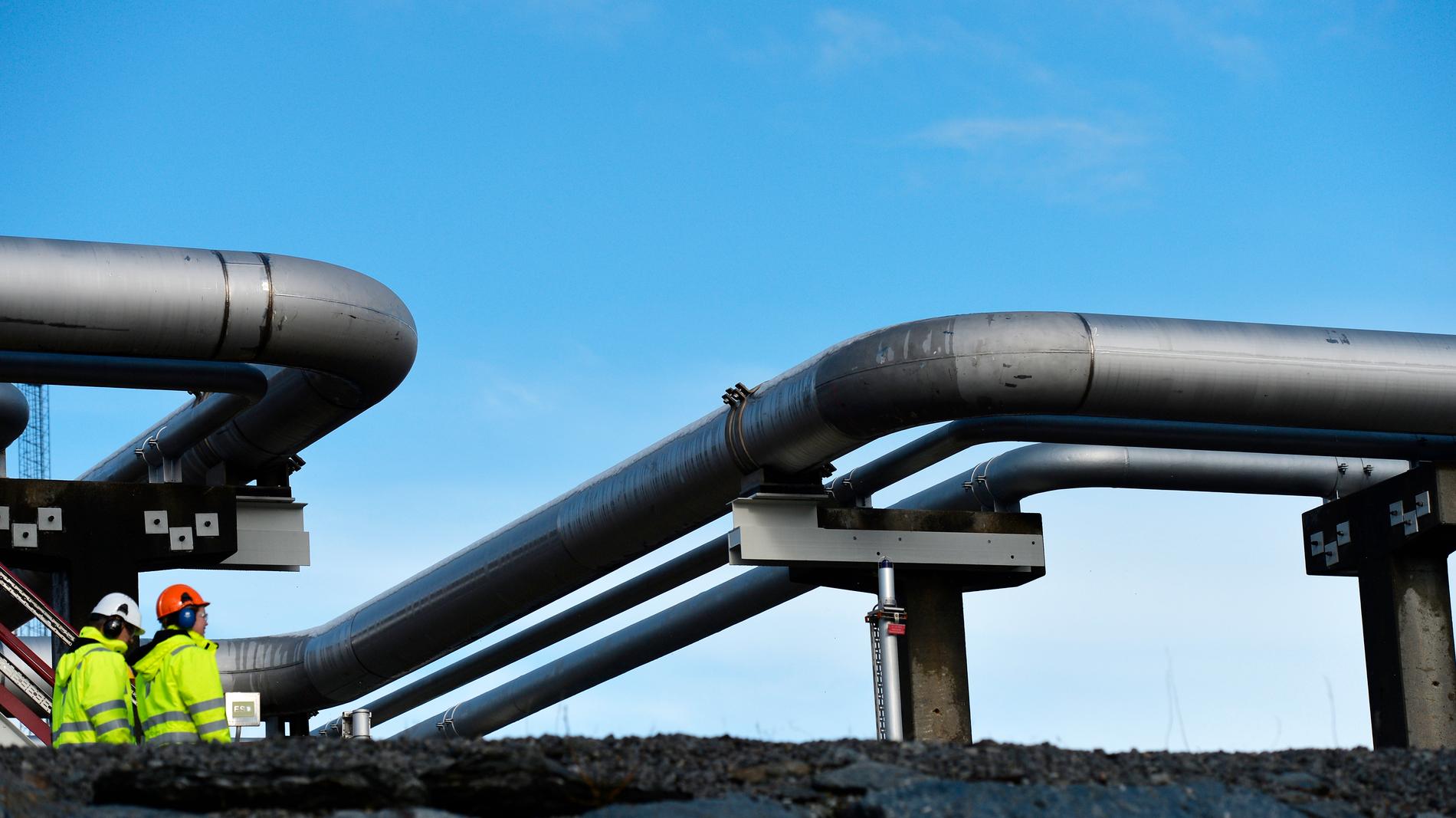WATCH THE VIDEO:
Wondering what the conditions are like in the eyewall of a category four hurricane? Then you should check out this Saildrone video.
Saildrone, which produces unmanned maritime drones powered by solar cells and wind, recently released several video clips from inside Hurricane Fiona, which swept through parts of Canada and the Caribbean last week. The clips show the sailboat battling against 15-meter-high waves, as well as winds of more than 45 meters per second, or 160 km / h.
The drone that took the images is called SD 1078 and is one of seven similar vessels specifically designed to collect data, observations and images inside hurricanes. Saildrone typically produces sail drones used for mapping, sampling and exploring the seabed for longer periods of time, but the Hurricane version of Saildrone is radically different.
Orkandrons are built to withstand the most extreme conditions found on earth and as a result are radically different from other drones from the same manufacturer. At 23 feet, the Hurricane variant is the smallest of Saildrone’s ships, and it also has a significantly smaller wing compared to other drones. For example, the drone specializing in seabed mapping is 60 feet.
During the 2022 hurricane season, SD 1078 and six other identical drones will be sent into storms and hurricanes to collect data that cannot be measured. Specifically, the researchers want to improve understanding of the processes that lead to the “unexpected” rapid intensification of hurricanes.
technology constellation
Sailing drones, on the other hand, are just one piece of a larger puzzle of observations that scientists at NOAA, America’s “meteorological institute,” are now trying to piece together. In addition to the sailing drones, NOAA wants to adopt a number of new tools that will form a constellation of instruments capable of making observations of the same weather system, from several positions, at the same time.
The observation system consists, among other things, of underwater gliders and floating drones, in addition to more conventional tools such as drop probes, buoys and aircraft.
The sail drone deployment began in 2021, with the highlight of this season being when the SD 1045 drone successfully spent 24 hours inside Hurricane Sam.
Since then, more glider drones have become operational, and researchers expect to get more sightings this season compared to the 2021 hurricane season.
Florida next
At the time of this writing, Hurricane “Ian” is making landfall on the west coast of Florida resulting in, among other things, IBEX, a major boat show in the United States, has been canceled. It’s still unclear if we’ll be able to see footage from inside this hurricane, but where “Ian” is now in an area that NOAA has previously designated as an active sighting area.
In the future, it seems likely that more images of Saildrone will be released showing what it looks like inside hurricanes and other storms.
INSIDE HURRICANE “SAM”: In 2021, SD 1045 was in Hurricane “Sam” for more than a day, the film shows clips of this trip.

“Music practitioner. Passionate bacon fanatic. Reader. Food enthusiast. Alcohol nerd. Gamer. Twitter maven.”








